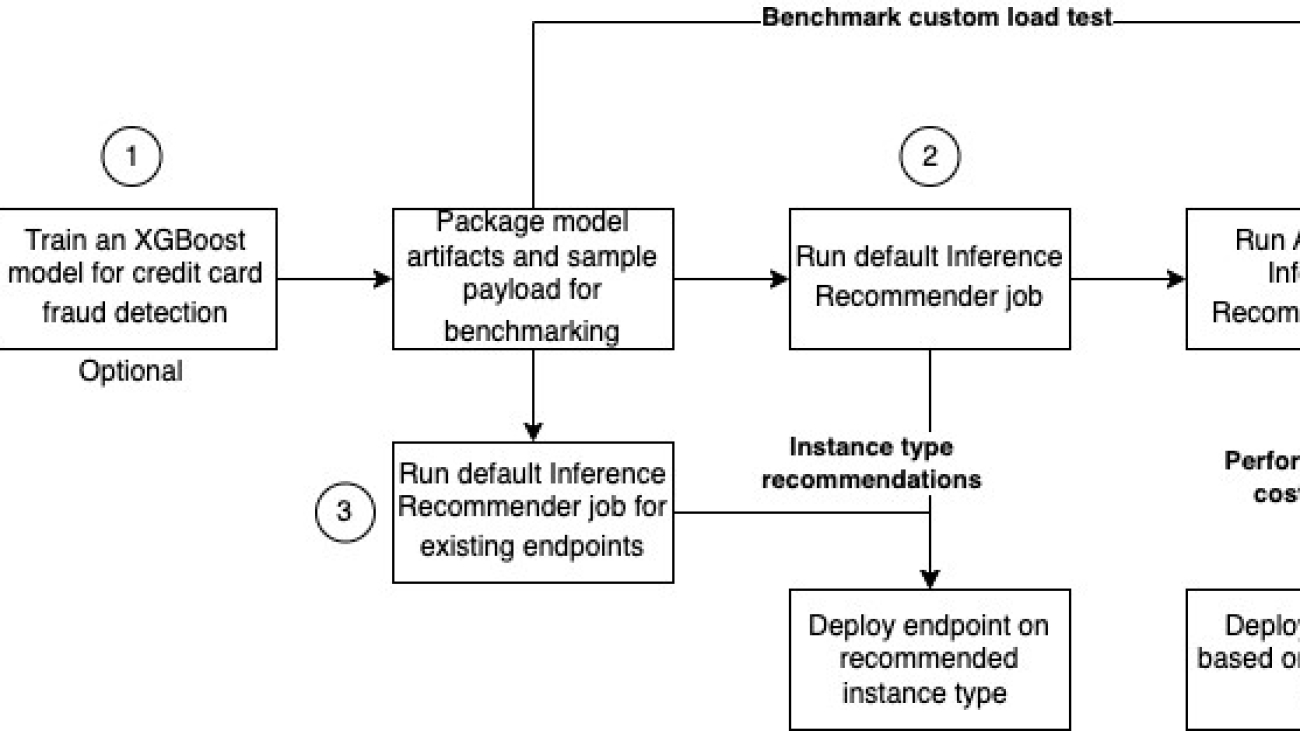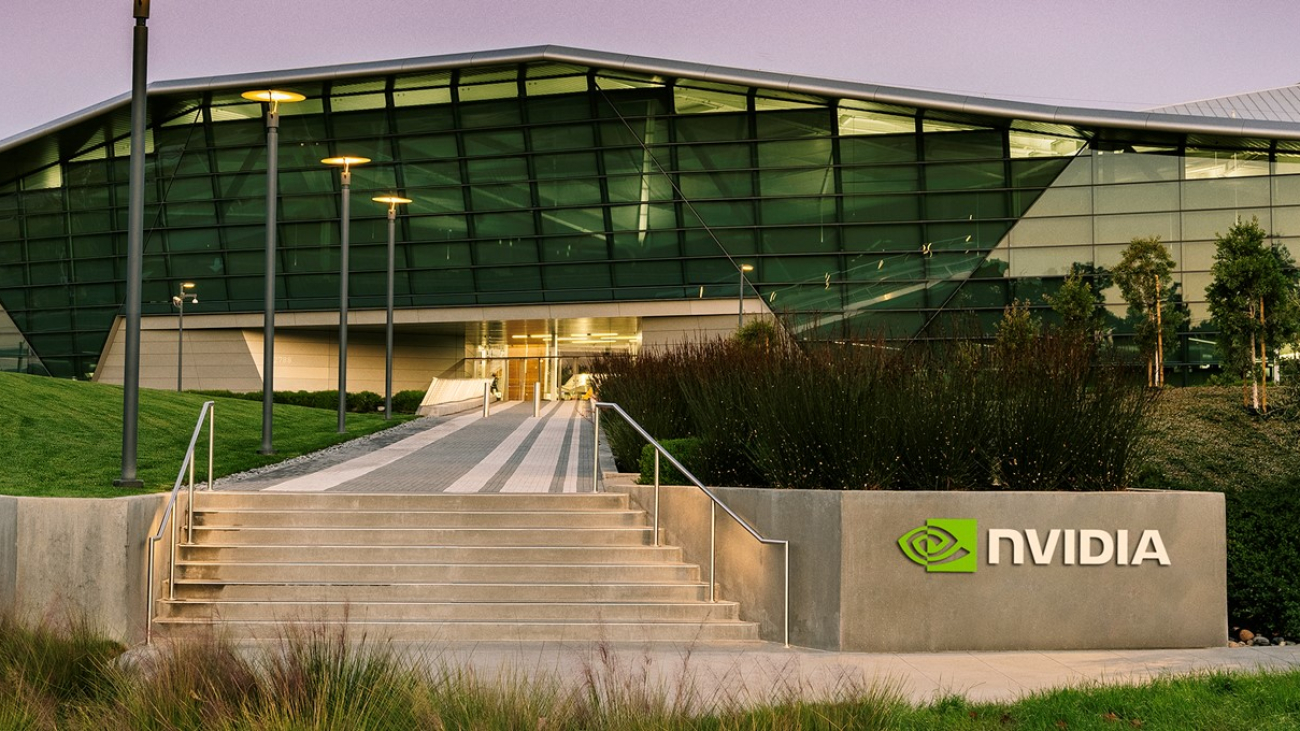We announced some changes that will accelerate our progress in AI and help us develop more capable AI systems more safely and responsibly.Read More
Driving Toward a Safer Future: NVIDIA Achieves Safety Milestones With DRIVE Hyperion Autonomous Vehicle Platform
More than 50 automotive companies around the world have deployed over 800 autonomous test vehicles powered by the NVIDIA DRIVE Hyperion automotive compute architecture, which has recently achieved new safety milestones.
The latest NVIDIA DRIVE Hyperion architecture is based on the DRIVE Orin system-on-a-chip (SoC). Many NVIDIA DRIVE processes, as well as hardware and software components, have been assessed and/or certified compliant to ISO 26262 by TÜV SÜD, an independent, accredited assessor that ensures compliance with the International Organization for Standardization (ISO) 26262:2018 Functional Safety Standard for Road Vehicles.
 Specifically, NVIDIA DRIVE core development processes are now certified as ISO 26262 Automotive Safety Integrity Level (ASIL) D compliant. ISO 26262 is based on the concept of a safety lifecycle, which includes planning, analysis, design and implementation, verification and validation.
Specifically, NVIDIA DRIVE core development processes are now certified as ISO 26262 Automotive Safety Integrity Level (ASIL) D compliant. ISO 26262 is based on the concept of a safety lifecycle, which includes planning, analysis, design and implementation, verification and validation.
Additionally:
- The NVIDIA DRIVE Orin SoC completed concept and product assessments and is deemed to meet ISO 26262 ASIL D systematic requirements and ASIL B random fault management requirements.
- The NVIDIA DRIVE AGX Orin board completed concept assessment and is deemed to meet ISO 26262 ASIL D requirements.
- The NVIDIA DRIVE Orin-based platform, which unifies the Orin SoC and DRIVE AGX Orin board, completed concept assessment and is deemed to meet ISO 26262 ASIL D requirements.
- Development of NVIDIA DRIVE OS 6.x is in progress and will be assessed by TÜV SÜD. This follows the recent certification of DRIVE OS 5.2, which includes NVIDIA CUDA libraries and the NVIDIA TensorRT software development kit for real-time AI inferencing.
Building safe autonomous vehicle technology is one of NVIDIA’s largest and most important endeavors, and functional safety is the focus at every step, from design to testing to deployment.
Functional safety is paramount in the deployment of AVs — ensuring they operate safely and reliably without endangering occupants, pedestrians or other road users.
AV Functional Safety Leadership
The initial ISO 26262 ASIL D functional safety certification — and recertification — of NVIDIA’s hardware development processes, along with the assessment of two generations of SoCs that include NVIDIA GPU and Tensor Core technology, demonstrate NVIDIA’s commitment to AV functional safety.
NVIDIA’s leadership in AV safety is further exhibited in its contributions to published standards – such as ISO 26262 and ISO 21448 — and ongoing initiatives — such as ISO/TS 5083 on AV safety, ISO/PAS 8800, ISO/IEC TR 5469 on AI safety and ISO/TR 9839.
Unified Hardware and Software Architecture
NVIDIA offers a unified hardware and software architecture throughout its AV research, design and deployment infrastructure. NVIDIA DRIVE Hyperion is an end-to-end, modular development platform and reference architecture for designing autonomous vehicles. The latest generation includes the NVIDIA DRIVE AGX Orin developer kit, plus a diverse and redundant sensor suite.
Self-Driving Safety Report
Learn more about NVIDIA’s AV safety practices and technologies in the NVIDIA Self-Driving Safety Report.
Improved ML model deployment using Amazon SageMaker Inference Recommender
Each machine learning (ML) system has a unique service level agreement (SLA) requirement with respect to latency, throughput, and cost metrics. With advancements in hardware design, a wide range of CPU- and GPU-based infrastructures are available to help you speed up inference performance. Also, you can build these ML systems with a combination of ML models, tasks, frameworks, libraries, tools, and inference engines, making it important to evaluate the ML system performance for the best possible deployment configurations. You need recommendations on finding the most cost-effective ML serving infrastructure and the right combination of software configuration to achieve the best price-performance to scale these applications.
Amazon SageMaker Inference Recommender is a capability of Amazon SageMaker that reduces the time required to get ML models in production by automating load testing and model tuning across SageMaker ML instances. In this post, we highlight some of the recent updates to Inference Recommender:
- SageMaker Python SDK support for running Inference Recommender
- Inference Recommender usability improvements
- New APIs that provide flexibility in running Inference Recommender
- Deeper integration with Amazon CloudWatch for logging and metrics
Credit card fraud detection use case
Any fraudulent activity that is not detected and mitigated immediately can cause significant financial loss. Particularly, credit card payment fraud transactions need to be identified right away to protect the individual’s and company’s financial health. In this post, we discuss a credit card fraud detection use case, and learn how to use Inference Recommender to find the optimal inference instance type and ML system configurations that can detect fraudulent credit card transactions in milliseconds.
We demonstrate how to set up Inference Recommender jobs for a credit card fraud detection use case. We train an XGBoost model for a classification task on a credit card fraud dataset. We use Inference Recommender with a custom load to meet inference SLA requirements to satisfy peak concurrency of 30,000 transactions per minute while serving predictions results in less than 100 milliseconds. Based on Inference Recommender’s instance type recommendations, we can find the right real-time serving ML instances that yield the right price-performance for this use case. Finally, we deploy the model to a SageMaker real-time endpoint to get prediction results.
The following table summarizes the details of our use case.
| Model Framework | XGBoost |
| Model Size | 10 MB |
| End-to-End Latency | 100 milliseconds |
| Invocations per Second | 500 (30,000 per minute) |
| ML Task | Binary Classification |
| Input Payload | 10 KB |
We use a synthetically created credit card fraud dataset. The dataset contains 28 numerical features, time of the transaction, transaction amount, and class target variables. The class column corresponds to whether or not a transaction is fraudulent. The majority of data is non-fraudulent (284,315 samples), with only 492 samples corresponding to fraudulent examples. In the data, Class is the target classification variable (fraudulent vs. non-fraudulent) in the first column, followed by other variables.
In the following sections, we show how to use Inference Recommender to get ML hosting instance type recommendations and find optimal model configurations to achieve better price-performance for your inference application.
Which ML instance type and configurations should you select?
With Inference Recommender, you can run two types of jobs: default and advanced.
The default Instance Recommender job runs a set of load tests to recommended the right ML instance types for any ML use case. SageMaker real-time deployment supports a wide range of ML instances to host and serve the credit card fraud detection XGBoost model. The default job can run a load test on a selection of instances that you provide in the job configuration. If you have an existing endpoint for this use case, you can run this job to find the cost-optimized performant instance type. Inference Recommender will compile and optimize the model for a specific hardware of inference endpoint instance type using Amazon SageMaker Neo. It’s important to note that not all compilation results in improved performance. Inference Recommender will report compilation details when the following conditions are met:
- Successful compilation of the model using Neo. There could be issues in the compilation process such as invalid payload, data type, or more. In this case, compilation information is not available.
- Successful inference using the compiled model that shows performance improvement, which appears in the inference job response.
An advanced job is a custom load test job that allows you to perform extensive benchmarks based on your ML application SLA requirements, such as latency, concurrency, and traffic pattern. You can configure a custom traffic pattern to simulate credit card transactions. Additionally, you can define the end-to-end model latency to predict if a transaction is fraudulent and define the maximum concurrent transactions to the model for prediction. Inference Recommender uses this information to run a performance benchmark load test. The latency, concurrency, and cost metrics from the advanced job help you make informed decisions about the ML serving infrastructure for mission-critical applications.
Solution overview
The following diagram shows the solution architecture for training an XGBoost model on the credit card fraud dataset, running a default job for instance type recommendation, and performing load testing to decide the optimal inference configuration for the best price-performance.

The diagram shows the following steps:
- Train an XGBoost model to classify credit card transactions as fraudulent or legit. Deploy the trained model to a SageMaker real-time endpoint. Package the model artifacts and sample payload (.tar.gz format), and upload them to Amazon Simple Storage Service (Amazon S3) so Inference Recommender can use these when the job is run. Note that the training step in this post is optional.
- Configure and run a default Inference Recommender job on a list of supported instance types to find the right ML instance type that gives the best price-performance for this use case.
- Optionally, run a default Inference Recommender job on an existing endpoint.
- Configure and run an advanced Inference Recommender job to perform a custom load test to simulate user interactions with the credit card fraud detection application. This helps you find the right configurations to satisfy latency, concurrency, and cost for this use case.
- Analyze the default and advanced Inference Recommender job results, which include ML instance type recommendation latency, performance, and cost metrics.
A complete example is available in our GitHub notebook.
Prerequisites
To use Inference Recommender, make sure to meet the prerequisites.
Python SDK support for Inference Recommender
We recently released Python SDK support for Inference Recommender. You can now run default and advanced jobs using a single function: right_size. Based on the parameters of the function call, Inference Recommender infers if it should run default or advanced jobs. This greatly simplifies the use of Inference Recommender using the Python SDK. To run the Inference Recommender job, complete the following steps:
- Create a SageMaker model by specifying the framework, version, and image scope:
- Optionally, register the model in the SageMaker model registry. Note that parameters such as domain and task during model package creation are also optional parameters in the recent release.
- Run the
right_sizefunction on the supported ML inference instance types using the following configuration. Because XGBoost is a memory-intensive algorithm, we provide ml.m5 type instances to get instance type recommendations. You can call theright_sizefunction on the model registry object as well. - Define additional parameters to the
right_sizefunction to run an advanced job and custom load test on the model:- Configure the traffic pattern using the
phasesparameter. In the first phase, we start the load test with two initial users and create two new users for every minute for 2 minutes. In the following phase, we start the load test with six initial users and create two new users for every minute for 2 minutes. Stopping conditions for the load tests are p95 end-to-end latency of 100 milliseconds and concurrency to support 30,000 transactions per minute or 500 transactions per second. - We tune the endpoint against the environment variable
OMP_NUM_THREADSwith values[3,4,5]and we aim to limit the latency requirement to 100 milliseconds and achieve max concurrency of 30,000 invocations per minute. The goal is to find which value forOMP_NUM_THREADSprovides the best performance.
- Configure the traffic pattern using the
Run Inference Recommender jobs using the Boto3 API
You can use the Boto3 API to launch Inference Recommender default and advanced jobs. You need to use the Boto3 API (create_inference_recommendations_job) to run Inference Recommender jobs on an existing endpoint. Inference Recommender infers the framework and version from the existing SageMaker real-time endpoint. The Python SDK doesn’t support running Inference Recommender jobs on existing endpoints.
The following code snippet shows how to create a default job:
Later in this post, we discuss the parameters needed to configure an advanced job.
Configure a traffic pattern using the TrafficPattern parameter. In the first phase, we start a load test with two initial users (InitialNumberOfUsers) and create two new users (SpawnRate) for every minute for 2 minutes (DurationInSeconds). In the following phase, we start the load test with six initial users and create two new users for every minute for 2 minutes. Stopping conditions (StoppingConditions) for the load tests are p95 end-to-end latency (ModelLatencyThresholds) of 100 milliseconds (ValueInMilliseconds) and concurrency to support 30,000 transactions per minute or 500 transactions per second (MaxInvocations). See the following code:
Inference Recommender job results and metrics
The results of the default Inference Recommender job contain a list of endpoint configuration recommendations, including instance type, instance count, and environment variables. The results contain configurations for SAGEMAKER_MODEL_SERVER_WORKERS and OMP_NUM_THREADS associated with the latency, concurrency, and throughput metrics. OMP_NUM_THREADS is the model server tunable environment parameter. As shown in the details in the following table, with an ml.m5.4xlarge instance with SAGEMAKER_MODEL_SERVER_WORKERS=3 and OMP_NUM_THREADS=3, we got a throughput of 32,628 invocations per minute and model latency under 10 milliseconds. ml.m5.4xlarge had 100% improvement in latency, an approximate 115% increase in concurrency compared to the ml.m5.xlarge instance configuration. Also, it was 66% more cost-effective compared to the ml.m5.12xlarge instance configurations while achieving comparable latency and throughput.
| Instance Type | Initial Instance Count | OMP_NUM_THREADS | Cost Per Hour | Max Invocations | Model Latency | CPU Utilization | Memory Utilization | SageMaker Model Server Workers |
| ml.m5.xlarge | 1 | 2 | 0.23 | 15189 | 18 | 108.864 | 1.62012 | 1 |
| ml.m5.4xlarge | 1 | 3 | 0.922 | 32628 | 9 | 220.57001 | 0.69791 | 3 |
| ml.m5.large | 1 | 2 | 0.115 | 13793 | 19 | 106.34 | 3.24398 | 1 |
| ml.m5.12xlarge | 1 | 4 | 2.765 | 32016 | 4 | 215.32401 | 0.44658 | 7 |
| ml.m5.2xlarge | 1 | 2 | 0.461 | 32427 | 13 | 248.673 | 1.43109 | 3 |
We have included CloudWatch helper functions in the notebook. You can use the functions to get detailed charts of your endpoints during the load test. The charts have details on invocation metrics like invocations, model latency, overhead latency, and more, and instance metrics such as CPUUtilization and MemoryUtilization. The following example shows the CloudWatch metrics for our ml.m5.4xlarge model configuration.

You can visualize Inference Recommender job results in Amazon SageMaker Studio by choosing Inference Recommender under Deployments in the navigation pane. With a deployment goal for this use case (high latency, high throughput, default cost), the default Inference Recommender job recommended an ml.m5.4xlarge instance because it provided the best latency performance and throughput to support a maximum 34,600 invocations per minute (576 TPS). You can use these metrics to analyze and find the best configurations that satisfy latency, concurrency, and cost requirements of your ML application.

We recently introduced ListInferenceRecommendationsJobSteps, which allows you to analyze subtasks in an Inference Recommender job. The following code snippet shows how to use the list_inference_recommendations_job_steps Boto3 API to get the list of subtasks. This can help with debugging Inference Recommender job failures at the step level. This functionality is not supported in the Python SDK yet.
The following code shows the response:
Run an advanced Inference Recommender job
Next, we run an advanced Inference Recommender job to find optimal configurations such as SAGEMAKER_MODEL_SERVER_WORKERS and OMP_NUM_THREADS on an ml.m5.4xlarge instance type. We set the hyperparameters of the advanced job to run a load test on different combinations:
You can view the advanced Inference Recommender job results on the Studio console, as shown in the following screenshot.

Using the Boto3 API or CLI commands, you can access all the metrics from the advanced Inference Recommender job results. InitialInstanceCount is the number of instances that you should provision in the endpoint to meet ModelLatencyThresholds and MaxInvocations mentioned in StoppingConditions. The following table summarizes our results.
| Instance Type | Initial Instance Count | OMP_NUM_THREADS | Cost Per Hour | Max Invocations | Model Latency | CPU Utilization | Memory Utilization |
| ml.m5.2xlarge | 2 | 3 | 0.922 | 39688 | 6 | 86.732803 | 3.04769 |
| ml.m5.2xlarge | 2 | 4 | 0.922 | 42604 | 6 | 177.164993 | 3.05089 |
| ml.m5.2xlarge | 2 | 5 | 0.922 | 39268 | 6 | 125.402 | 3.08665 |
| ml.m5.4xlarge | 2 | 3 | 1.844 | 38174 | 4 | 102.546997 | 2.68003 |
| ml.m5.4xlarge | 2 | 4 | 1.844 | 39452 | 4 | 141.826004 | 2.68136 |
| ml.m5.4xlarge | 2 | 5 | 1.844 | 40472 | 4 | 107.825996 | 2.70936 |
Clean up
Follow the instructions in the notebook to delete all the resources created as part of this post to avoid incurring additional charges.
Summary
Finding the right ML serving infrastructure, including instance type, model configurations, and auto scaling polices, can be tedious. This post showed how you can use the Inference Recommender Python SDK and Boto3 APIs to launch default and advanced jobs to find the optimal inference infrastructure and configurations. We also discussed the new improvements to Inference Recommender, including Python SDK support and usability improvements. Check out our GitHub repository to get started.
About the Authors
 Shiva Raaj Kotini works as a Principal Product Manager in the AWS SageMaker inference product portfolio. He focuses on model deployment, performance tuning, and optimization in SageMaker for inference.
Shiva Raaj Kotini works as a Principal Product Manager in the AWS SageMaker inference product portfolio. He focuses on model deployment, performance tuning, and optimization in SageMaker for inference.
 John Barboza is a Software Engineer at AWS. He has extensive experience working on distributed systems. His current focus is on improving the SageMaker inference experience. In his spare time, he enjoys cooking and biking.
John Barboza is a Software Engineer at AWS. He has extensive experience working on distributed systems. His current focus is on improving the SageMaker inference experience. In his spare time, he enjoys cooking and biking.
 Mohan Gandhi is a Senior Software Engineer at AWS. He has been with AWS for the last 10 years and has worked on various AWS services like Amazon EMR, Amazon EFA, and Amazon RDS. Currently, he is focused on improving the SageMaker inference experience. In his spare time, he enjoys hiking and marathons.
Mohan Gandhi is a Senior Software Engineer at AWS. He has been with AWS for the last 10 years and has worked on various AWS services like Amazon EMR, Amazon EFA, and Amazon RDS. Currently, he is focused on improving the SageMaker inference experience. In his spare time, he enjoys hiking and marathons.
 Ram Vegiraju is an ML Architect with the SageMaker service team. He focuses on helping customers build and optimize their AI/ML solutions on Amazon SageMaker. In his spare time, he loves traveling and writing.
Ram Vegiraju is an ML Architect with the SageMaker service team. He focuses on helping customers build and optimize their AI/ML solutions on Amazon SageMaker. In his spare time, he loves traveling and writing.
 Vikram Elango is an Sr. AIML Specialist Solutions Architect at AWS, based in Virginia USA. He is currently focused on Generative AI, LLMs, prompt engineering, large model inference optimization and scaling ML across enterprises. Vikram helps financial and insurance industry customers with design, thought leadership to build and deploy machine learning applications at scale. In his spare time, he enjoys traveling, hiking, cooking and camping with his family.
Vikram Elango is an Sr. AIML Specialist Solutions Architect at AWS, based in Virginia USA. He is currently focused on Generative AI, LLMs, prompt engineering, large model inference optimization and scaling ML across enterprises. Vikram helps financial and insurance industry customers with design, thought leadership to build and deploy machine learning applications at scale. In his spare time, he enjoys traveling, hiking, cooking and camping with his family.
Recent honors and awards for Amazon scientists
Researchers honored for their contributions to the scientific community.Read More
Don’t Wait: GeForce NOW Six-Month Priority Memberships on Sale for Limited Time
GFN Thursday rolls up this week with a hot new deal for a GeForce NOW six-month Priority membership.
Enjoy the cloud gaming service with seven new games to stream this week, including more favorites from Bandai Namco Europe and F1 2021 from Electronic Arts.
Make Gaming a Priority

Starting today, GeForce NOW is offering a limited-time discount sure to spark up gamers looking to skip the wait and jump right into their games. Through Sunday, May 21, get 40% off a six-month Priority membership for $29.99, normally $49.99.
It’s perfect for those looking to try out GeForce NOW or lock in a lower price for another half-year with one of GeForce NOW’s premium membership tiers.
Priority members get higher access to GeForce gaming servers, meaning less wait times than free members, as well as gaming sessions extended up to six hours. Priority members can also stream across multiple devices with beautifully ray-traced graphics with RTX ON for supported games.
With new games added weekly and other top titles on the way, gamers won’t want to miss out on this hot deal. Sign up now or power up devices even further with an Ultimate membership, GeForce NOW’s highest performance tier.
The Dark Side of the Cloud

Carve out time this month for The Dark Pictures Anthology series from Bandai Namco Europe, with support for ray tracing to bring a realistic tinge of spine-tingling horror to the cloud.
Each entry of the popular series features interactive horror stories with unique characters and plots. Choose what happens in each adventure while discovering branching narratives and multiple endings.
The first game in the series, Man of Medan, follows a group of young adults stranded on a ghost ship haunted by malevolent spirits. Little Hope, next in the series, features a group of college students and their professor who must escape a cursed New England town haunted by witches.
House of Ashes, the series’ third installment, features war soldiers who unknowingly awaken an ancient evil force when they stumble across an underground temple. The Devil in Me, set in a replica of a real-life serial killer’s “Murder Castle,” follows a documentary film crew as they set out to capture footage of the hotel, only to find their lives at grave risk.
With more Bandai Namco titles joining the cloud this week, it’ll be easy as pie to start a marathon for The Dark Pictures Anthology series, if you dare.
Take a Victory Lap

Jump into the seat of a Formula One driver in F1 2021 from Electronic Arts. Every story has its beginning, and members can start theirs with the Braking Point story mode, a thrilling experience with on-track competition and off-track drama.
Take on the Formula One world and go head to head against official teams and drivers in “Career Mode,” solo or with a buddy. Or, put the pedal to the metal with “Real-Season Start” mode to redo the F1 2021 season as desired, if Max Verstappen didn’t happen to be your winner of choice. There’s plenty of content with other gaming modes, including “My Team” and online multiplayer.
F1 2021 is fueled up with RTX ON for Ultimate and Priority members — the ultrarealistic game play will have players feeling as if they’re racing directly from the track.
Blazing-Hot New Games
Sit back and relax with new games and a demo joining the cloud this week. Start with Monster Hunter Rise — first-time hunters can try it out for free with a demo of the game and its expansion, Sunbreak, available now to all GeForce NOW members.
Plus, the highly anticipated first-person action role-playing game Dead Island 2 launches in the cloud this week. In this sequel to the popular game Dead Island from Deep Silver, horror and dark humor mix well throughout the zombie-slaying adventure set in Los Angeles. Play solo if you dare, or with some buddies.
GFN Thursday keeps on rolling with seven hot new games available to stream this week:
- Survival: Fountain of Youth (New release on Steam, April 19)
- Dead Island 2 (New release on Epic Games Store, April 21)
- F1 2021 (Steam)
- The Dark Pictures Anthology: Man of Medan (Steam)
- The Dark Pictures Anthology: Little Hope (Steam)
- The Dark Pictures Anthology: House of Ashes (Steam)
- The Dark Pictures Anthology: The Devil in Me (Steam)
That wraps up another GFN Thursday. Let us know how you’re making gaming a priority this weekend in the comments below, or on the GeForce NOW Facebook and Twitter channels.
Make your cloud gaming a 𝙥𝙧𝙞𝙤𝙧𝙞𝙩𝙮 tomorrow.
—
NVIDIA GeForce NOW (@NVIDIAGFN) April 19, 2023
NVIDIA Announces Partners of the Year in Europe, Middle East
NVIDIA today recognized a dozen partners for their work helping customers in Europe, the Middle East and Africa harness the power of AI across industries.
At a virtual EMEA Partner Day event, which was hosted by the NVIDIA Partner Network (NPN) and drew more than 750 registrants, Partner of the Year awards were given to companies working with NVIDIA to lead AI education and adoption across the region. The winners are transforming how their customers tap AI to improve data centers, manufacturing, sales and marketing workflows and more.
“NVIDIA partners have been at the forefront of technological advances and incredible business opportunities emerging across EMEA, using innovative NVIDIA solutions to help customers reduce costs, increase efficiency and solve their greatest challenges,” said Alfred Manhart, vice president of the EMEA channel at NVIDIA. “With the EMEA NPN Partner of the Year awards, we honor those who play a critical role in the success of our business as they apply their knowledge and expertise to deliver transformative solutions across a range of industries.”
The 2023 NPN award winners for EMEA are:
Central Europe
- THINK ABOUT IT, Germany — Rising Star Partner of the Year. Recognized for driving exceptional revenue growth of close to 100% across the complete NVIDIA portfolio. Throughout four years of working with NVIDIA, the IT services company has become a cornerstone of the NVIDIA partner landscape in Germany.
- Delta Computer Reinbek, Germany — Star Performer Partner of the Year. Recognized for outstanding sales achievement and customer relations, deploying NVIDIA high performance computing, machine learning, deep learning and AI solutions to enterprise, industry and higher education and research institutes throughout Germany.
- MEGWARE Computer, Germany — Go-to-Market Excellence Partner of the Year. Recognized for its broad NVIDIA H100 marketing campaign, using its own benchmark center to increase awareness and generate leads.
Northern Europe
- AMAX, Ireland — Rising Star Partner of the Year. Recognized for its significant commitment to helping customers meet their AI and HPC goals, and aligning with members of the NVIDIA Inception program for startups to create new opportunities within the enterprise and automotive sectors.
- Boston Ltd., U.K. — Star Performer Partner of the Year. Recognized for exceptional execution across business areas and implementation of a full-stack approach to deliver complex solutions built on NVIDIA technologies, which have led Boston Ltd. to achieve record revenues.
- Scan Computers International Ltd., U.K. — Go-to-Market Excellence Partner of the Year. Recognized for designing and delivering several successful marketing campaigns comprising high-quality digital content and a comprehensive user-experience strategy, resulting in a strong return on investment.
Southern Europe and Middle East
- Computacenter, France — Rising Star Partner of the Year. Recognized for its fast growth across solution areas, addition of many new customers and close engagement with NVIDIA to drive significant revenue growth.
- MBUZZ, United Arab Emirates — Star Performer Partner of the Year. Recognized for its dedication to increasing the adoption of NVIDIA technologies throughout the Middle East, growing revenue in areas ranging from HPC to visualization and achieving 100% annual growth.
- Azken Muga, Spain — Go-to-Market Excellence Partner of the Year. Recognized for outstanding marketing performance, alignment with NVIDIA’s strategic goals and consistent investment in high-impact, high-quality marketing campaigns with a focus on the NVIDIA DGX platform.
Distribution Partners
- PNY Technologies Europe — Distributor of the Year. Recognized for the second consecutive year for providing NVIDIA accelerated computing platforms and software to vertical markets — including media and entertainment, healthcare and cloud data center — as well as its commitment to delivering significant year-on-year sales growth.
- TD Synnex — Networking Distributor of the Year. Recognized for its dedication toward, expertise in and understanding of both NVIDIA technologies and customers’ business needs, as well as its commitment to partner outreach and consistent reseller support.
Outstanding Impact
- SoftServe — Outstanding Impact Award. Recognized for its commitment to innovating and collaborating with NVIDIA at all levels. SoftServe has dedicated significant time and resources to creating a practice based on the NVIDIA Omniverse platform for building and operating metaverse applications — building industry-specific showcases, developing dedicated Omniverse labs and training, and enabling thousands of its employees to tap NVIDIA solutions.
“It’s an honor for SoftServe to be recognized as the NPN Outstanding Impact Partner of the Year, an award that demonstrates the importance of collaborating with strong partners like NVIDIA to solve complex challenges using cutting-edge technologies,” said Volodymyr Semenyshyn, president of EMEA at SoftServe. “SoftServe is fully dedicated to advancing our vision of accelerated computing by combining NVIDIA’s trailblazing technologies with our strong industry expertise to deliver leading IT solutions and services that empower our customers.”
This year’s awards arrive as AI adoption is rapidly expanding across industries, unlocking new opportunities and accelerating discovery in healthcare, finance, business services and more. As AI models become more complex, the 2023 NPN Award winners are expert partners that can help enterprises develop and deploy AI in production using the infrastructure that best aligns with their operations.
Learn how to join the NPN, or find your local NPN partner.
Announcing Google DeepMind
DeepMind and the Brain team from Google Research will join forces to accelerate progress towards a world in which AI helps solve the biggest challenges facing humanity.Read More
Announcing Google DeepMind
DeepMind and the Brain team from Google Research will join forces to accelerate progress towards a world in which AI helps solve the biggest challenges facing humanity.Read More
Announcing Google DeepMind
DeepMind and the Brain team from Google Research will join forces to accelerate progress towards a world in which AI helps solve the biggest challenges facing humanity.Read More
Announcing Google DeepMind
DeepMind and the Brain team from Google Research will join forces to accelerate progress towards a world in which AI helps solve the biggest challenges facing humanity.Read More










